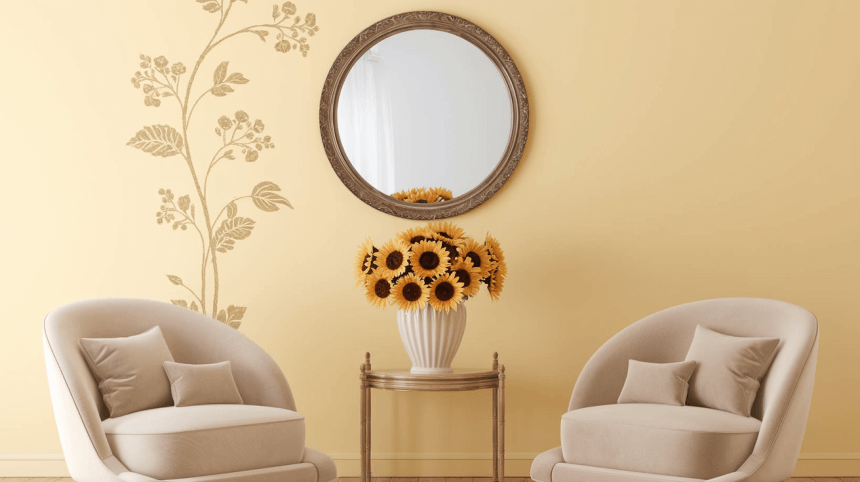Ever looked at a room and felt your eyes drawn to one specific spot? That’s a focal point at work.
When you enter a space, your brain searches for a place to rest its attention. Without it, rooms feel confusing and make people uncomfortable. Good design uses focal points to guide visitors through spaces naturally.
Focal points create order in what could otherwise be chaos. They help organize everything from living rooms to websites, giving the eye a clear path to follow.
Creating these visual anchors doesn’t require expensive items or complex skills. Sometimes, it’s as simple as arranging furniture around a window or using a bold color on one wall.
This guide will show you how to spot, create, and use focal points in your design projects.
What is a Focal Point in Design?
A focal point is the star of the room – the element that catches your eye first when you walk in. In interior design, it works as a central point that draws attention and holds interest.
Think of it as the main character in your room’s story. Every good story needs a main character, and every well-designed room needs a focal point. It gives the eye somewhere to land before taking in the rest of the space.
Focal points serve as visual anchors that help balance a room. Without them, furniture and decor items float aimlessly with no clear purpose.
They create a starting point from which all other design choices flow—where to place furniture, what colors to use, and how to arrange smaller items.
Good focal points don’t just look nice—they help make sense of the space around them. They turn random objects into thoughtful arrangements with clear purpose and direction.
Why is the Focal Point Important in Design?
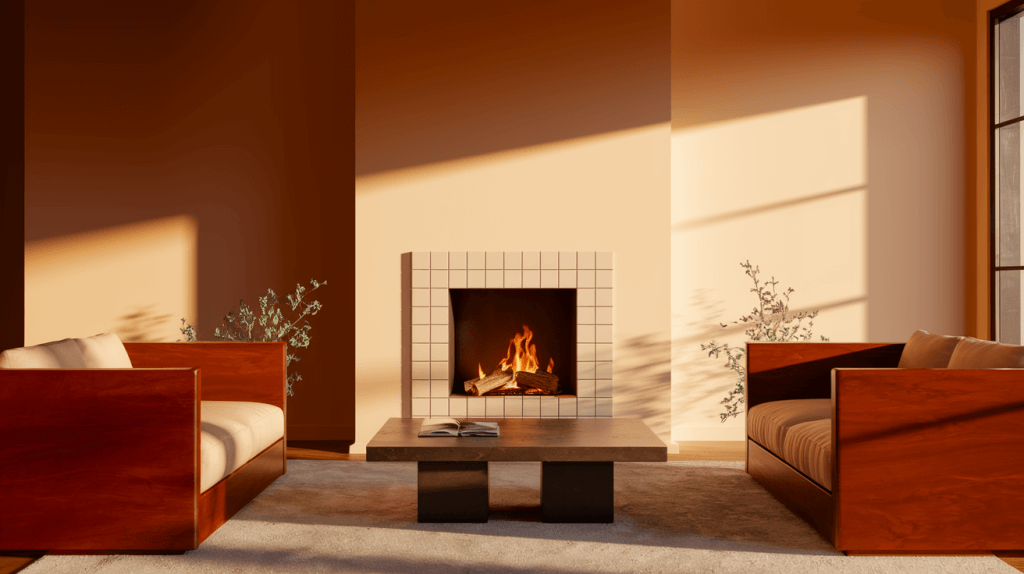
Focal points do more than catch the eye – they shape how people feel and move through spaces. Here’s why they matter:
- They create visual harmony by giving other elements a point to relate to.
- They establish a balance that makes rooms feel stable and comfortable.
- They guide the flow of movement through a space naturally.
- They set the mood – a fireplace creates warmth, while a window view brings calm.
- They tell visitors what’s important and where to look first.
- They prevent the eye from wandering without purpose around a room.
- They make small spaces feel more organized and less cluttered.
- They help tie different design elements together into one cohesive look.
The right focal point turns a jumbled room into a thoughtful space. It helps tell the story of who lives there and what matters to them.
When guests walk into a room with a clear focal point, they feel at ease – they know exactly where to look and how to make sense of the space.
Creating a Focal Point Around Your Design
Each room in your home needs a clear focal point. The right focus creates order and makes spaces work better. Different rooms serve different purposes, so your focal points should reflect how you use each space.
From bedrooms to bathrooms, the right visual anchor turns ordinary rooms into thoughtful, welcoming spaces. Here’s how to create focal points throughout your home:
Bedroom Focal Points
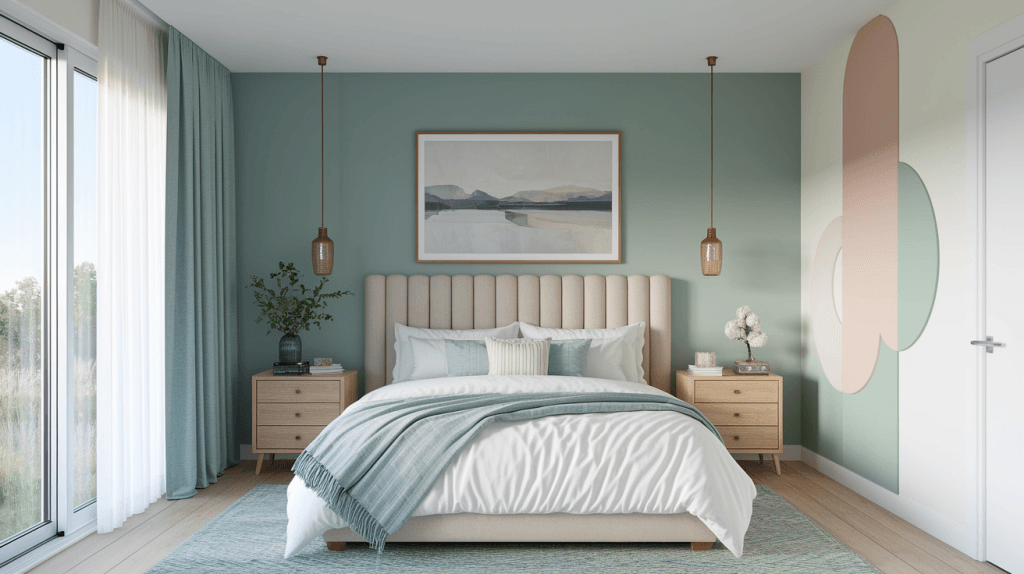
Your bedroom should feel peaceful. It’s your retreat where sleep matters most. The right focal point brings calm without fuss. A bed, artwork, or accent wall can serve as your bedroom’s main attraction.
- Use an eye-catching headboard with texture or color to make your bed the star.
- Hang artwork that fills at least 2/3 of wall space at eye level when standing.
- Create an accent wall using a color that appears in small doses elsewhere in the room.
Living Room Focal Points
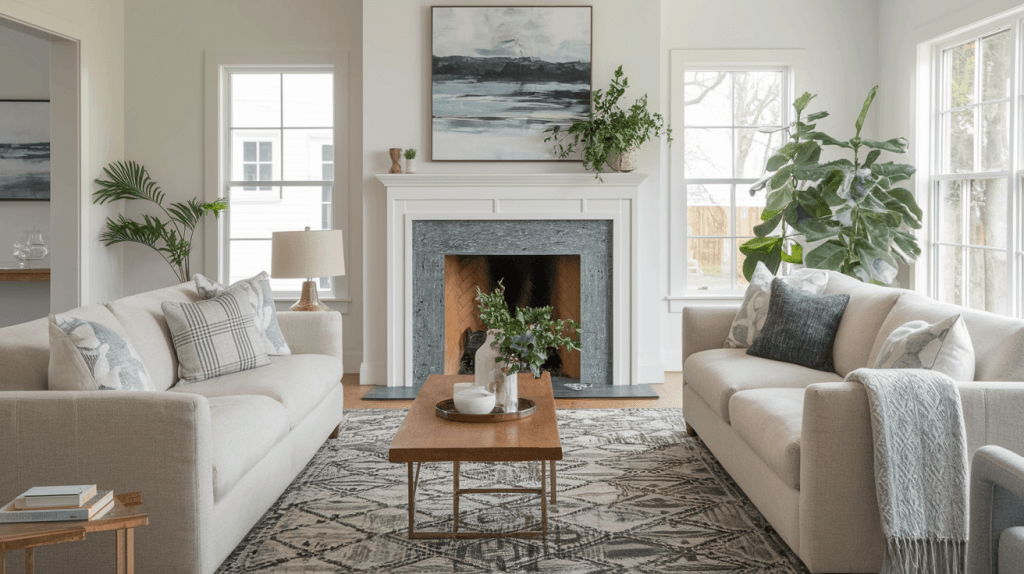
People gather here to connect and relax. This busy space needs a clear visual anchor that invites both conversation and comfort. Fireplaces, statement furniture, or feature walls work best.
- Position seating to face or flank your fireplace with one statement piece on the mantel
- Choose one standout furniture piece in a bold fabric where it’s seen immediately upon entering.
- Create a feature wall with shelving that displays just a few meaningful items with proper lighting.
Kitchen Focal Points
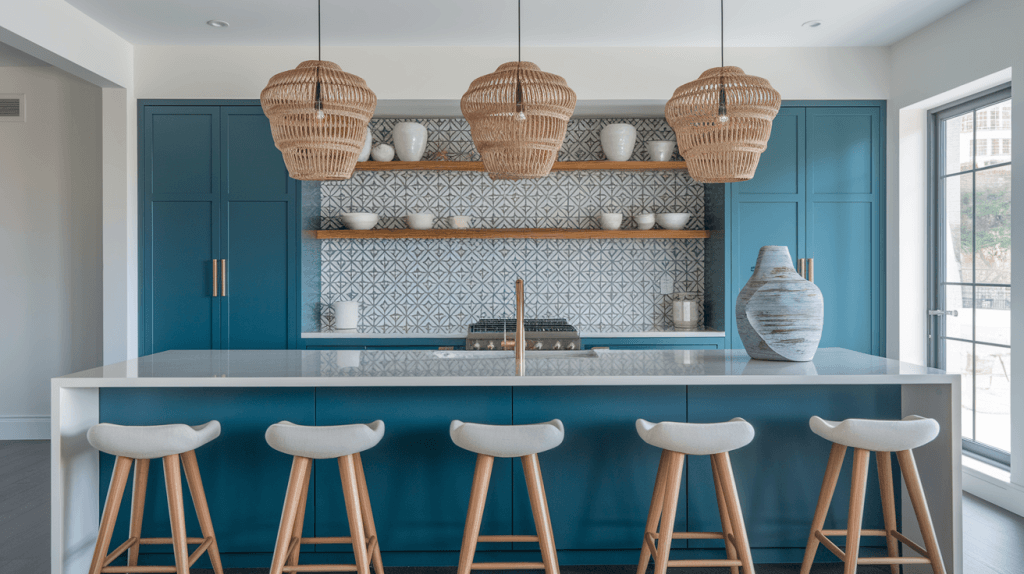
Kitchens blend function with style, feeding both body and soul. The right focal point enhances without blocking workflow. To create focus, look to backsplashes, islands, or lighting.
- Limit special tile to one key backsplash area while keeping nearby cabinets simple.
- Make your island stand out with either unusual lighting, seating, or a different cabinet color.
- Install a statement light fixture scaled to your room size so that it won’t cast shadows on work areas.
Bathroom Focal Points
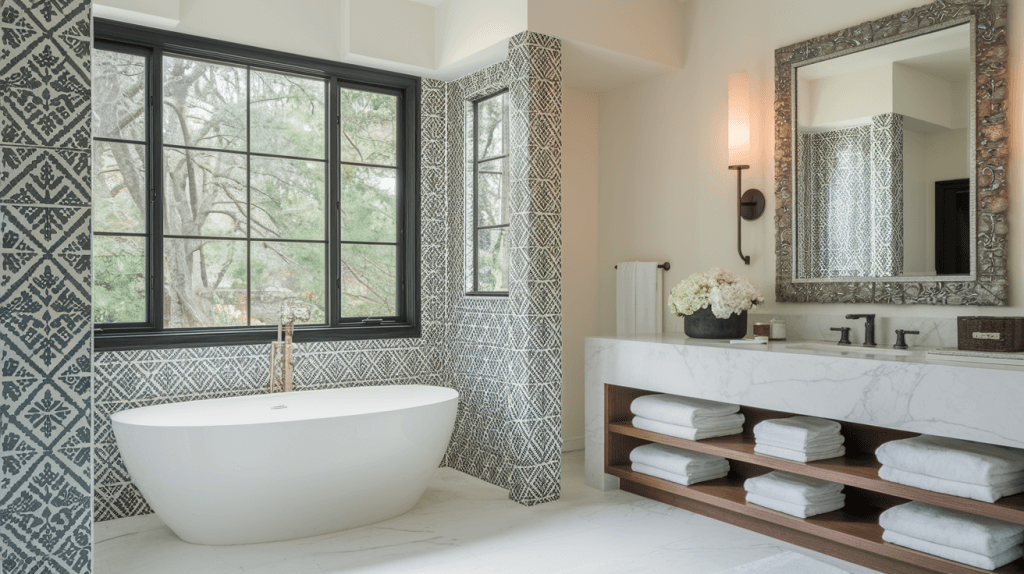
Even small bathrooms deserve focal points. These private spaces should feel special and set the tone for your day. Mirrors, bathtubs, or statement tiles create the most impact.
- Select a mirror shape that contrasts with your vanity with a frame material not used elsewhere.
- Position a freestanding tub under a window with one dramatic element nearby.
- Use special tile in just one area—shower wall, floor, or vanity backsplash—balanced with simple fixtures.
Mistakes Made When Deciding a Focal Point in Design
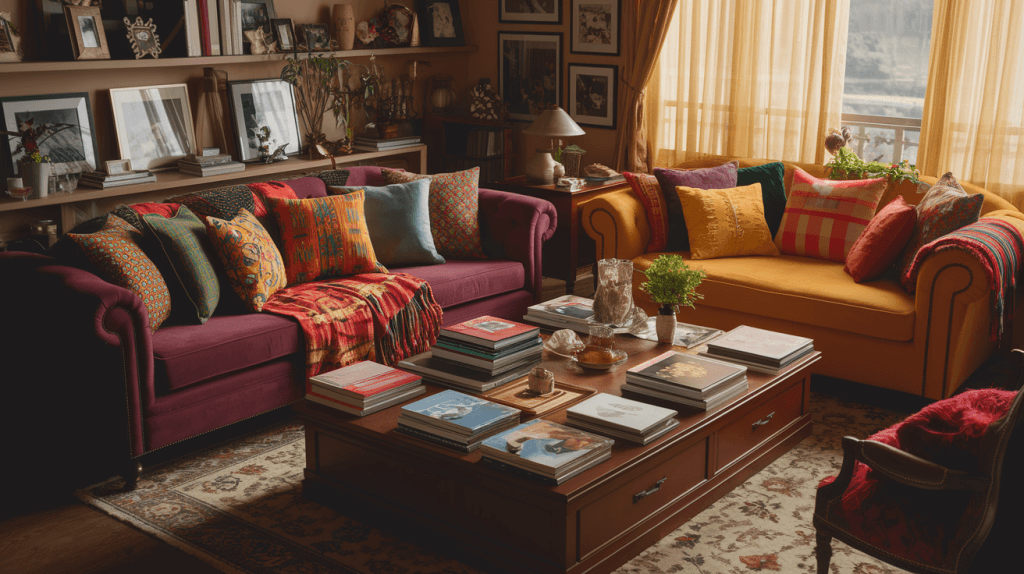
Even with the best intentions, focal points can go wrong. Knowing what to avoid is just as important as knowing what to do. These common mistakes can keep your spaces from reaching their full potential:
Overcrowding the space with too many focal points
- When everything screams for attention, nothing stands out
- Limit each room to one main focal point with perhaps one minor one
- Remove items that compete with your chosen focal point
Ignoring the natural flow of the room
- Focal points should work with traffic patterns, not block them
- Consider how people move through the space before placing your focal point
- Make sure seating arrangements let people see and enjoy the focal point
Choosing a focal point that clashes with the design style
- Your focal point should match the overall feel of your space
- Skip trendy focal points that might look dated too quickly
- Pick something you truly love that fits your lifestyle, not just what looks good in photos
Final Thoughts: The Power of Well-Placed Focal Points
Designing with focal points isn’t just about making spaces look good – it’s about making them work well for the people who use them.
Done right, focal points bring order to chaos and turn random items into thoughtful arrangements.
Remember that focal points don’t need to be big, costly, or fancy. A simple bookshelf, an area rug, or even a houseplant can serve as an effective focal point when placed with care.
By understanding and using focal points, anyone can create spaces that feel put-together and comfortable.
Start looking for focal points in the spaces around you. Once you spot them, you’ll see how they work their magic everywhere—from magazine covers to store displays to your living room.

